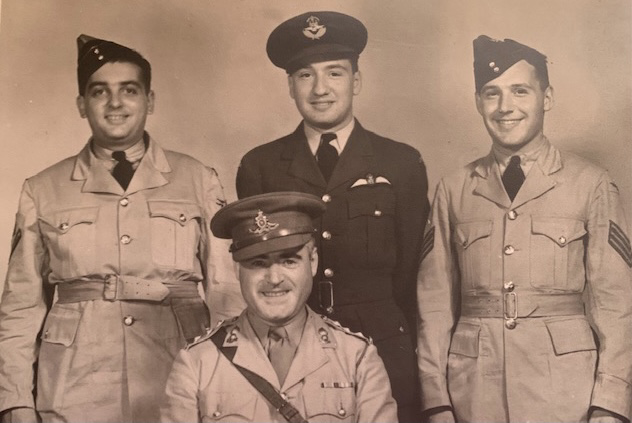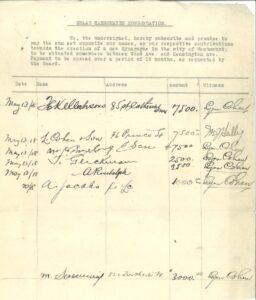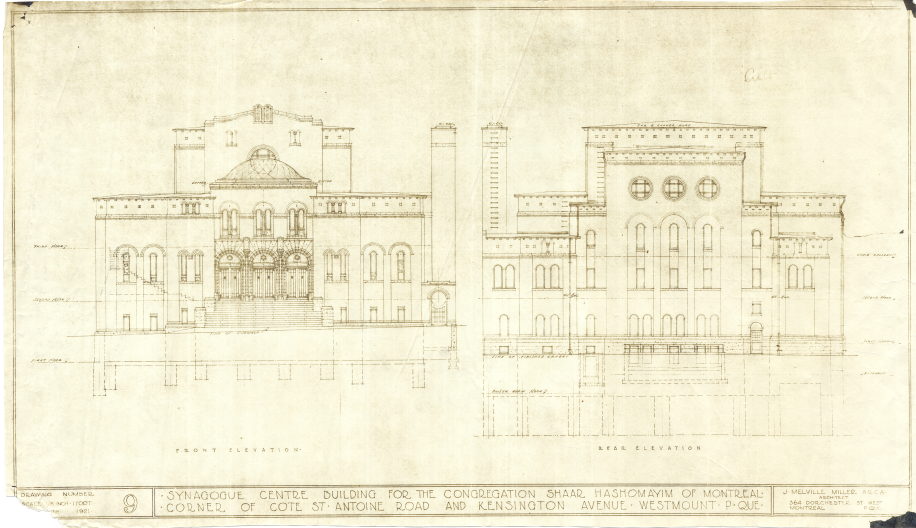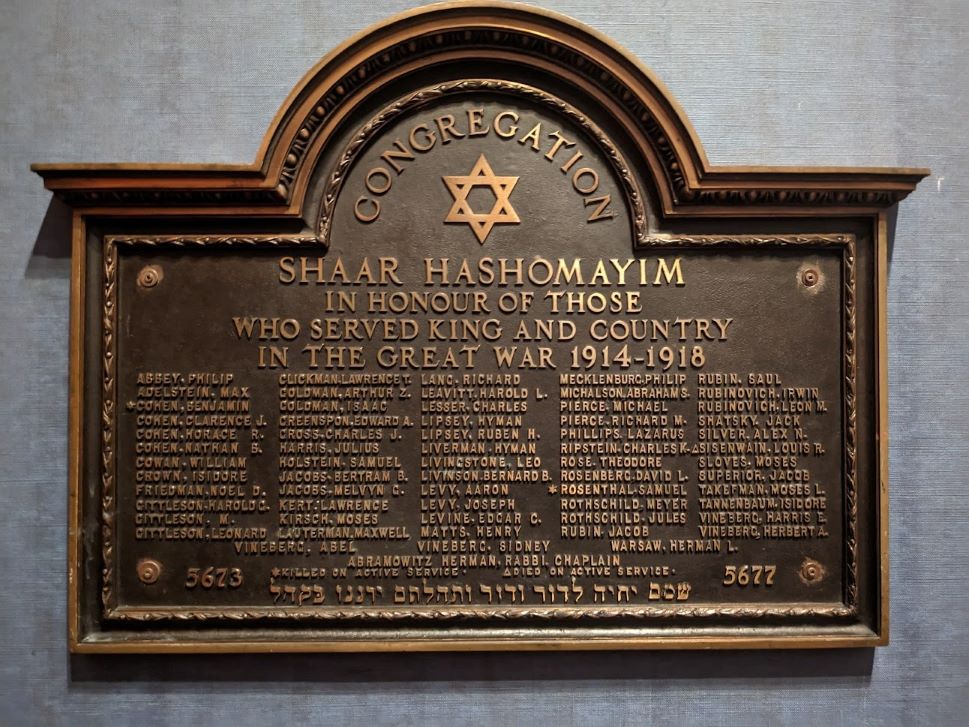Part 3: Growth, Construction, and the 1910s
Not long after the synagogue moved into its new home on McGill College in 1886, the Congregation was already outgrowing it. From the 1880s through the 1920s, Canada’s Jewish population grew rapidly amid a mass immigration of Jews from Eastern Europe. Indeed, as the Shaar’s membership grew, many other synagogues were founded across Montreal and Canada more broadly.
In the 1910s, the members of the congregation decided that it was time to relocate. They purchased a plot of land on Atwater Avenue in Westmount. They were, however, forced to sell this land during the First World War. (Incidentally, this plot would later become the site of the Montreal Forum, home of the Montreal Canadiens for decades!)
World War I
Members of the Shaar, like all Canadians, were actively involved in the war effort, and greatly impacted by it. Over 60 men of the Congregation enlisted to serve, three of whom died in service. Rabbi Abramowitz himself served as the first Jewish chaplain to Canadian forces, achieving the rank of Captain.

Major Moses O. Kirsch (centre) who served in World War I, with his nephews Arthur, Lionel, and Sidney Kirsch who served in the Canadian Armed Forces in World War II.
After The War

List of synagogue members and their financial pledges towards paying for the new building in Westmount.
Following the War, the Congregation resumed its search for a new location. In 1918, thanks to the tenacious efforts of Lyon Cohen, purchased land in Westmont at the corner of Kensington Avenue and Côte St. Antoine Road.
A building committee was quickly convened, chaired by J. A. Jacobs. A grand design for the building was produced by architect J. Melville Miller. (By the time the building was in construction, these original plans had been revised somewhat to accommodate financial restrictions.)

Architectural drawing of the front and back view of the Shaar Hashomayim building in Westmount. J. Melville Miller, architect. 1921.

Architectural drawing of the side of the Shaar Hashomayim building in Westmount. J. Melville Miller, architect. 1921.
The Congregation also arranged for the sale of the McGill College building’s furnishings to the Beth Shlomo synagogue (the Bagg Street Shul), where they remain in use to this day.
On November 10, 1921, the cornerstone was officially laid by Lyon Cohen, inside of which was sealed a time capsule to mark the momentous occasion.


